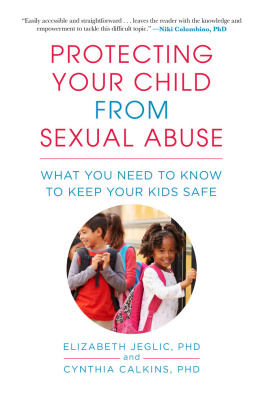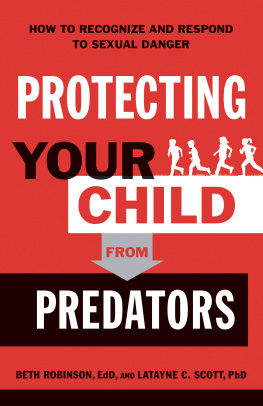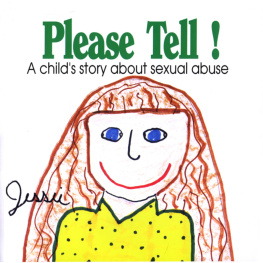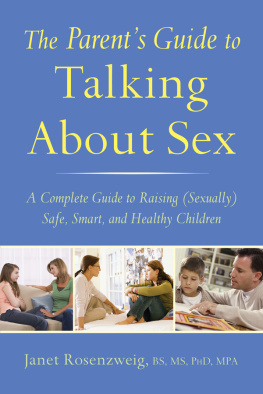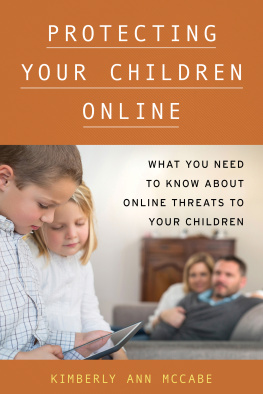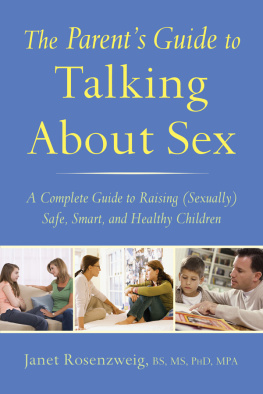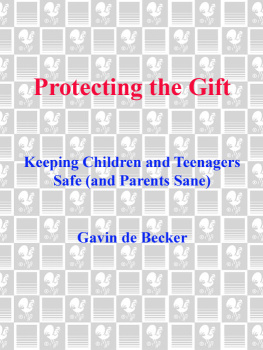Copyright 2018 by Elizabeth Jeglic and Cynthia Calkins
All rights reserved. No part of this book may be reproduced in any manner without the express written consent of the publisher, except in the case of brief excerpts in critical reviews or articles. All inquiries should be addressed to Skyhorse Publishing, 307 West 36th Street, 11th Floor, New York, NY 10018.
Skyhorse Publishing books may be purchased in bulk at special discounts for sales promotion, corporate gifts, fund-raising, or educational purposes. Special editions can also be created to specifications. For details, contact the Special Sales Department, Skyhorse Publishing, 307 West 36th Street, 11th Floor, New York, NY 10018 or .
Skyhorse and Skyhorse Publishing are registered trademarks of Skyhorse Publishing, Inc., a Delaware corporation.
Visit our website at www.skyhorsepublishing.com.
10 9 8 7 6 5 4 3 2 1
Library of Congress Cataloging-in-Publication Data is available on file.
Cover design by Jane Sheppard
Cover photo credit: iStockphoto
Print ISBN: 978-1-5107-2868-4
Ebook ISBN: 978-1-5107-2869-1
Printed in the United States of America
Contents
OVERVIEW
Introduction
This book represents perhaps the most important endeavor that we have embarked on to date. Together we have written over one hundred journal articles, book chapters, and a book on sexual violence prevention. As professors of psychology, our goal has been to figure out ways to reduce rates of sexual violence in our society. As clinical psychologists, we have both worked directly with sexual offenders, trying to help them to reduce their risk of reoffense. And as researchers, we have devoted ourselves to addressing this problem on a larger scale, studying how we as a society might do betterthrough our policies, treatment programs, and societal normsto lower rates of sexual violence. The majority of this work has been directed at other academics in our field, usually in the form of peer-reviewed research publications, or it has been through work with the offenders themselves. However, in the last decade we have both become mothers, and we began to think about sharing our work with a new audienceparents like ourselves. We have both struggled with reconciling what we know to be true based on the research (risks are lower than assumed) and what we feel as mothers (wanting to protect our children at all costs). Sexual violence prevention is not easy or simple, but research shows that there are things we can do. We think it is very important that parents are informed.
If you are reading this book, you are probably someone who likes to be kept aware, who strives to do the best they can for their children, and who understands the complexity of issues like sexual violence. As we thought about writing this book, one of the first questions we asked ourselves was: Will anyone read it? We had editors tell us: This is a really important topic. But no one will read that book. It is for that precise reason that we felt compelled to write it. Sexual violence is a very real problem, and sticking our heads in the sand will not make it go away. We know, however, that there is an audience of educated and concerned parents who do want to learn more.
The topic of sexual violence makes some people very uncomfortable, and people tend to avoid what makes them uncomfortable. Whenever someone asks what we do or what we study and we reply that we do research on sex offenders, the conversation invariably stops there. We want to change that. As psychologists, we know that avoidance (i.e., pretending a problem doesnt exist) is a poor coping strategy. While it stops the anxiety in the short term, it doesnt solve the problem and often makes it hard to envision more proactive strategies for dealing with it. So we are thankful for readers like you who, just by picking up this book, are beginning to nudge our society toward more open dialogue around important issues like sexual violence.
Between the two of us, we have five children aged eight and under. We want to protect them and keep them safe at all costs. As clinical psychologists, we also work with individuals who have experienced sexual abusewe know the extent to which these experiences negatively affect people throughout their lives. As professors who conduct research in sexual violence prevention, we know what the data says about sexual offending behavior, and we know that much of what the general public believes about sexual offenders is not accurate. That is not to suggest that the danger is not realit isbut the truth may be different than what many believe. Having accurate knowledge is one of the best and most fundamental ways to protect your children.
The Centers for Disease Control and Prevention estimates that one in six boys and one in four girls are sexually abused before the age of eighteen. That is a frightening statisticbut it is a real one and one that we cannot and should not avoid out of anxiety or fear. Whether comfortable or not, we want to help transform fear-based avoidance into proactive information-gathering and knowledge.
In writing this book, we hope to empower you as parents with the knowledge to keep your children safe. The fact that you are being proactive and reading this book puts you one step ahead of the game. You will learn in that there are many misconceptions about sex offenders. In response to that, we provide you with accurate, research-based information to ensure that your efforts in keeping your children safe are properly targeted. For example: you would not give your child a Band-Aid to treat a fever; in the same way, when you are educating yourself, your child, and your community, you must take similar care to gather the proper information before you make a decision. If you do not have the correct information, you cannot make the correct decisions.
While we wish there was something we could do as parents to keep our children 100 percent safe, this, in reality, is not possible. However, what we can do is equip you with research-based data, evidence-based guidance, and concrete steps that you can take to minimize these risks. While there is no surefire way to avoid the unexpected in life, information is power. That power may give us just a little bit of an edge, and as parents we strive to have every little edge we can to keep our children safe from harm.
We will also review risks for your children throughout childhood, adolescence, and young adulthood, as these risks change as your children grow and develop. When children are young, we have much more control over their environment, but as they become older and turn into adolescents, as parents we must adapt and continue to learn about new risks.
Each chapter is arranged similarly: we present an overview of the topic, highlighting key facts in boxes. Each chapter will culminate with a series of takeaway points and strategies you can employ to protect your children. While many of us like to skip around parenting books to the parts that are important or relevant to us, we recommend that you read the book from the beginning. The first few chapters include the most factual information and set the stage for the rest of the book.
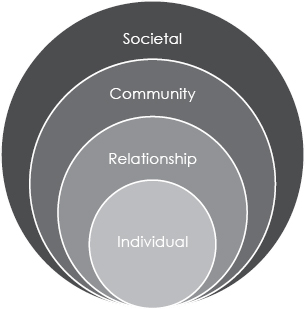
Based upon CDC Social-Ecological Model,
www.cdc.gov/violenceprevention/overview/social-ecologicalmodel.html
There are also a series of discussion group topics at the end of the book. Having open discussions about this material is very important to developing sexual violence prevention strategies in your family, school, and community. While parents can individually decrease the risk for their own children, it is only though larger school, community, and social efforts that a significant dent in the sexual violence problem can be made. As authors of this book, mothers, and researchers, we appreciate you taking this first step to open the dialogue about sexual violence. By bringing this issue out of the dark, we can prevent future harm.

